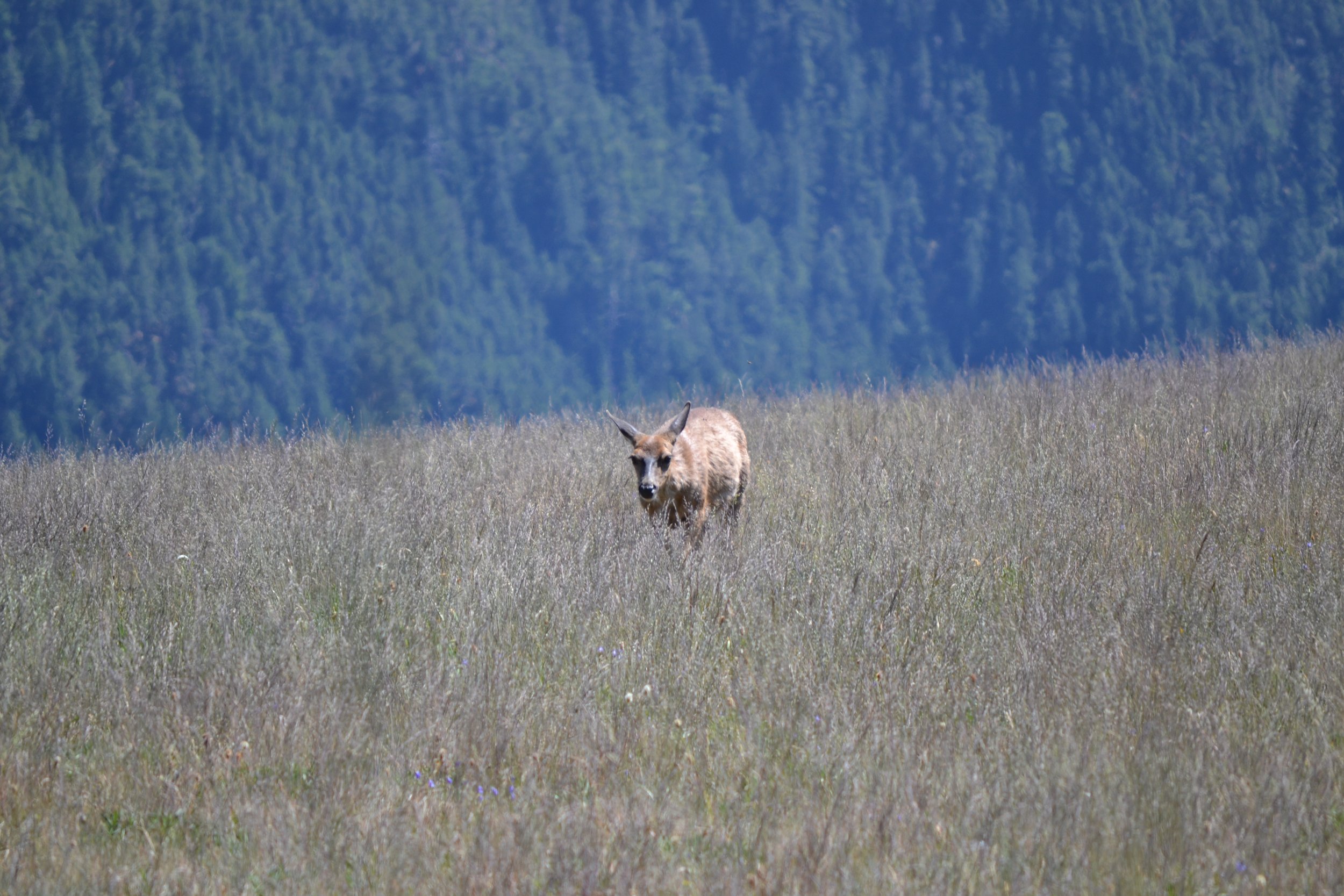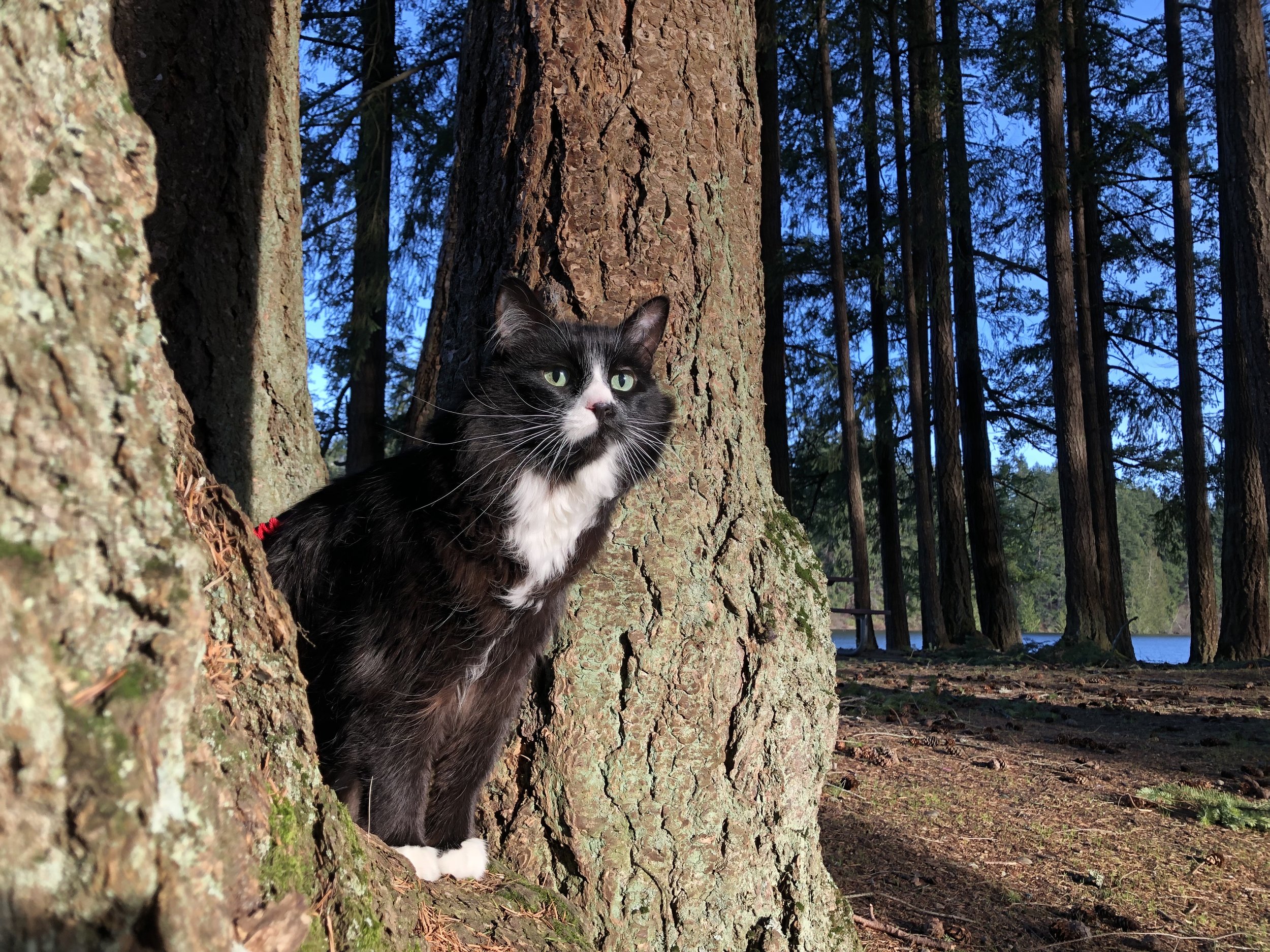Discover the Majestic Black-Tailed Deer
Have you ever gazed into the tranquil eyes of a black-tailed deer? Their beauty and grace can captivate anyone fortunate enough to witness them in their natural habitat. If you have yet to experience the wonder of these magnificent creatures, it's time to embark on a journey of discovery and learn more about black-tailed deer.
GHOSTLY the deer buck from TORC the CAT discoveries in North America part 2
Deer fun facts
Here are some interesting deer facts:
Widespread in North America: Deer are common throughout North America, from Mexico to Canada.
Black-Tailed Deer: Found along the Pacific Coast, from Oregon to Alaska.
Whitetail Deer: Most common in the eastern U.S.
Fawn, Buck, Doe: A young deer is a fawn, a male adult is a buck, and a female is a doe.
Camouflage: Fawns have light spotted fur, providing camouflage in tall grass.
Antlers: Only male deer grow antlers, which they shed every year. Bucks shed antlers from January to March and regrow them in spring.
Herbivores: Deer eat a wide variety of plants, flowers, berries, and vegetables.
Great Swimmers and Runners: Deer are skilled swimmers and can run incredibly fast to escape danger.
Black-tailed deer: More than Meets the Eye
Native to the Pacific Northwest of North America, black-tailed deer hold great cultural significance for many indigenous tribes in the region. By delving into their history and understanding their place in native folklore, you can develop a deeper connection to the traditions and heritage of these indigenous communities.
Unleash the Curious Mind: Whether you're a teacher, a parent, or simply an eternal seeker of knowledge, the world of black-tailed deer offers a vast array of educational possibilities. From their remarkable migratory patterns to their crucial role in maintaining healthy ecosystems, there is so much to uncover.
Unique Characteristics
Did you know that black-tailed deer are experts at camouflage? Their fur, which changes in color throughout the year, helps them blend seamlessly with their surroundings. By studying their physical adaptations and learning about their behavior, you can gain a newfound appreciation for their survival tactics and innate ability to thrive in various environments.
Habitat and Ecosystem
Exploring the habitat and ecosystem of black-tailed deer can unveil a fascinating world of interconnectedness. By understanding their role as herbivores and their impact on the vegetation around them, you can gain insights into the delicate balance of nature and the importance of preserving their habitats for the overall health of the ecosystem.
The Graceful Visitors
In the quiet embrace of the early morning, a family of black-tailed deer graced the backyard with their presence. Their sleek black tails and elegant frames added a touch of wild beauty to the tranquil scene.
Their presence was a reminder that nature's wonders are never too far away, even in the midst of the suburban landscape. The delicate balance between urban life and the untamed world was on full display as the deer cautiously navigated the edges of the property, their keen senses alert to any potential threat.
As the sun rose higher, casting a golden glow over the backyard, the deer continued their graceful dance, nibbling on tender shoots of grass and pausing to listen to the morning songs of birds. The sight of these majestic creatures in such close proximity provided a sense of connection to the natural world, a reminder of the untamed spirit that still thrives alongside the routines of daily life.
For a brief moment, as the black-tailed deer graced the backyard with their quiet presence, the boundaries between human and nature seemed to blur, and a sense of harmony settled over the land. The backyard had become a stage for a fleeting yet enchanting encounter with the wild, leaving an indelible impression on those who bore witness to this gentle spectacle.
Study of Migration
Black-tailed deer exhibit remarkable migratory patterns, moving between diverse habitats with the changing seasons. You can immerse yourself in the wonder of their annual migrations and discover the environmental factors that influence their movements. Through studying their migratory behaviors, you can gain a greater understanding of the challenges these deer face and the need to protect their migratory corridors.
Conservation Efforts
By learning more about black-tailed deer, you can actively contribute to their conservation efforts. Through education and awareness, you can inspire others to recognize the need to preserve their habitats, address wildlife corridors, and support initiatives that promote sustainable hunting practices and wildlife management.
Making a Difference, One Book at a Time! #SMILESwithTORC
Photography and Nature Observation
For those drawn to artistic expression or the simple pleasure of observing wildlife, black-tailed deer provide an endless source of inspiration. Grab your camera or binoculars and embark on a journey to witness their beauty up close.
Begin Your Journey of Discovery!
Spread the Knowledge
By sharing your experiences and wildlife observations, you can inspire others to connect with nature and appreciate the wonders of the natural world. The wildlife, with its enchanting presence, holds so much to learn, explore, and appreciate.
So, why wait any longer? Embark on an adventure of discovery, unravel their secrets, and let the allure of these majestic creatures enrich your life like never before.
Spend time in nature, whether it be your backyard or a local park. Open your heart and mind to the incredible world around you.
Education and awareness can lead to less conflict and foster a sense of respect and harmony with the natural world. Remember, knowledge is a gateway to understanding, and understanding breeds appreciation.
#SMILESwithTORC
〰️
Empowering communities since 2018
〰️
#SMILESwithTORC 〰️ Empowering communities since 2018 〰️
As November 2023, TORC visited 908 Little Free Libraries in 28 States and 1 Canadian Province, donating 2,907 TORC Books. Learn more about TORC’s past donations at: www.torcthecat.com/smileswithtorc


























